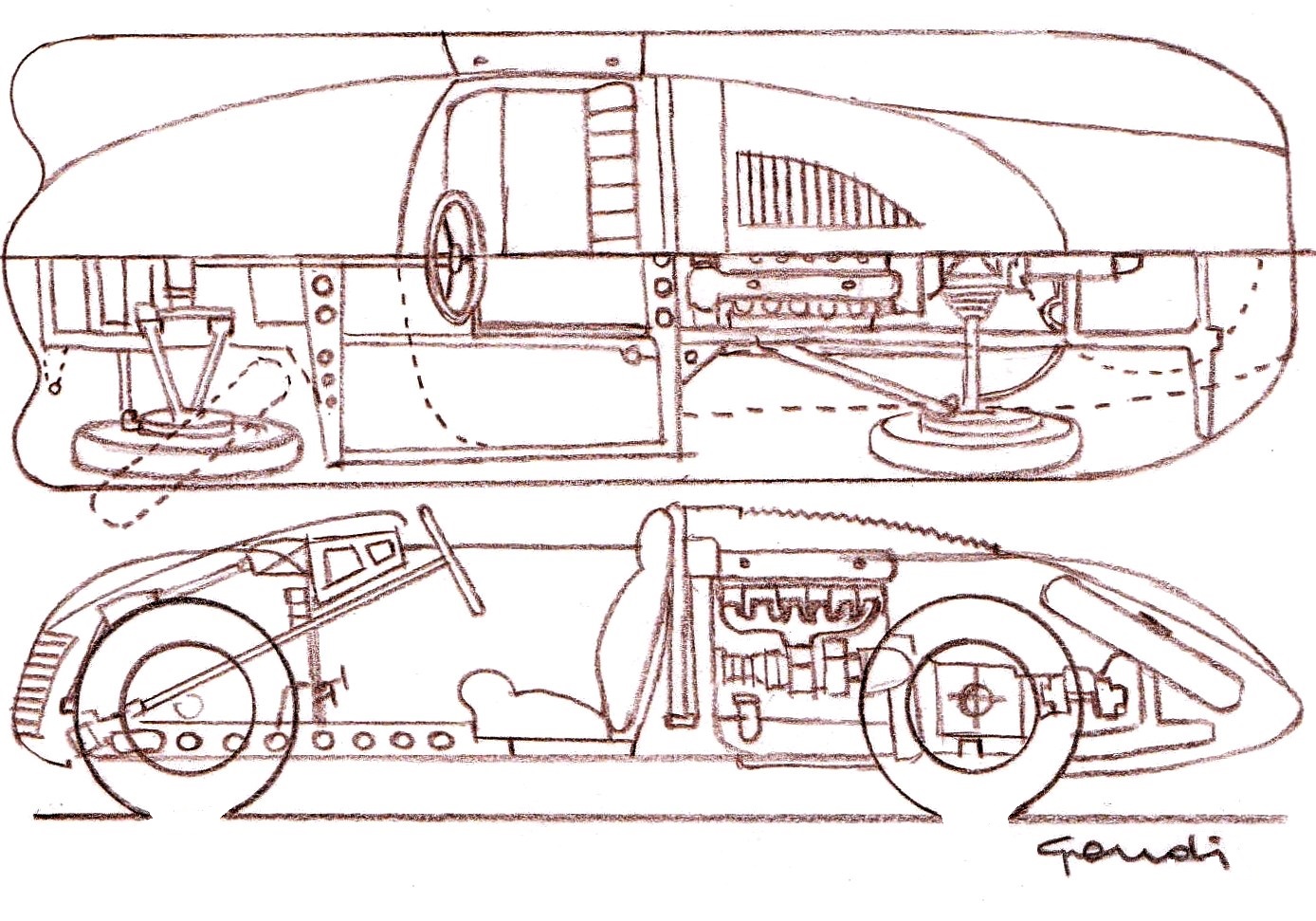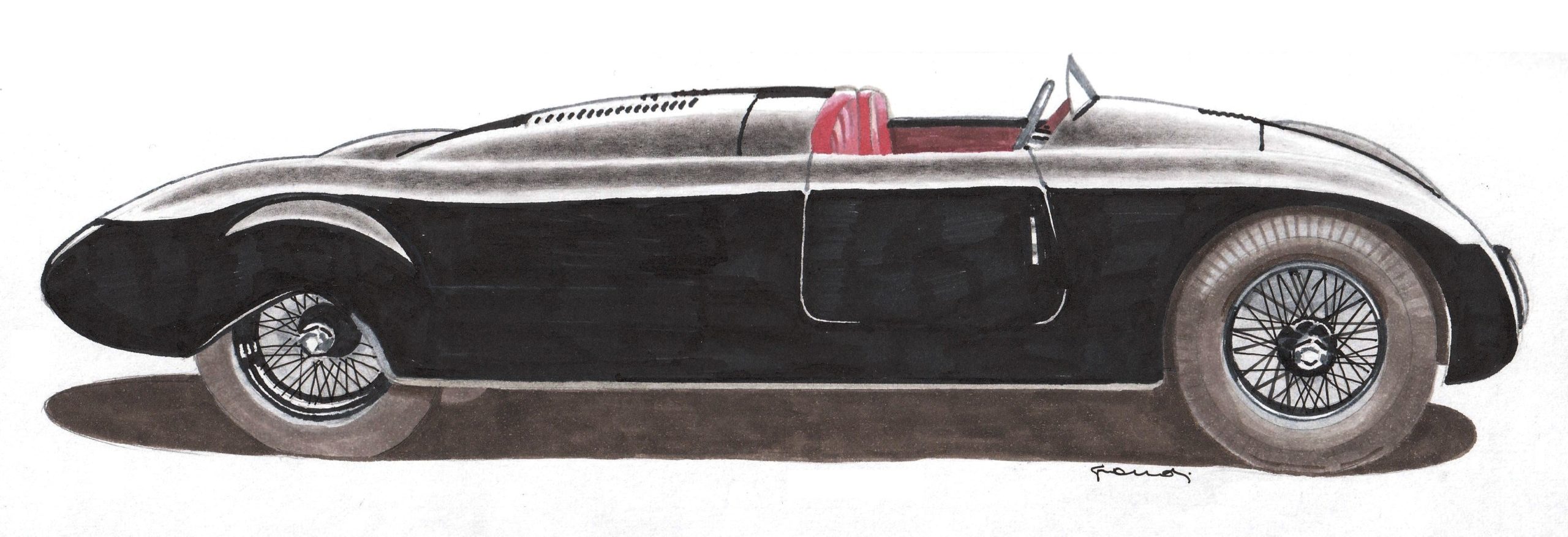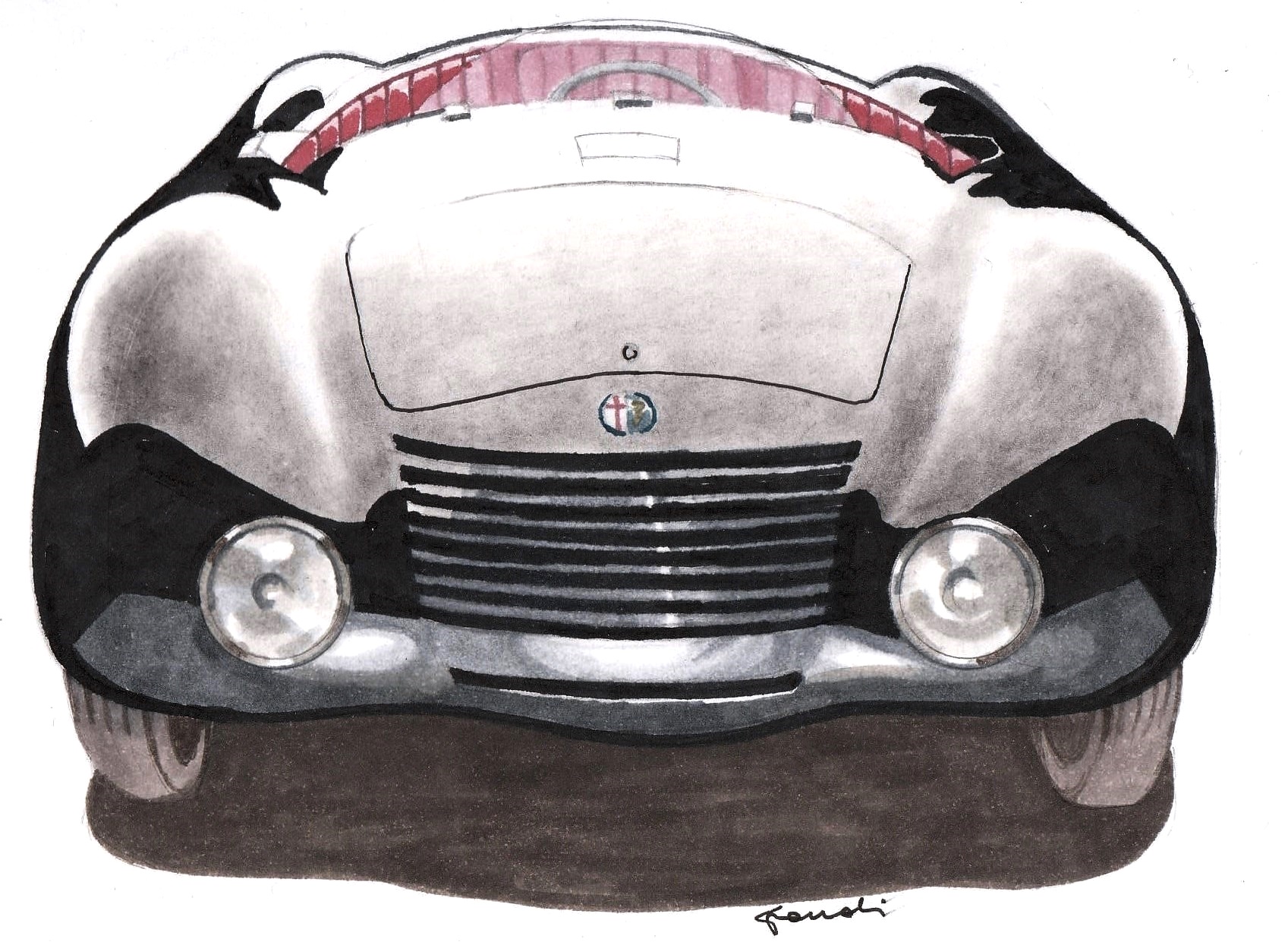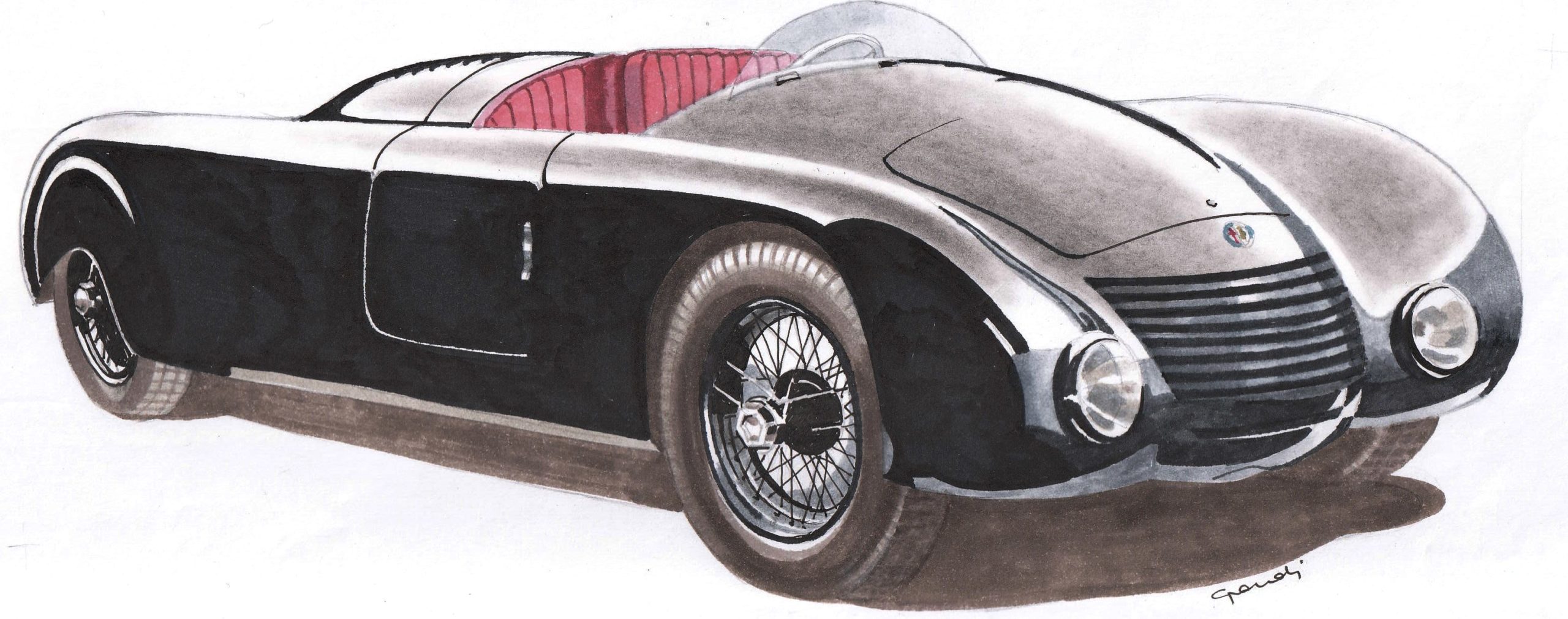Jankovits Aerospider
With the valuable support of Prof. Massimo Grandi’s depth of knowledge and illustrative talent
Photo credit: Some images are taken from the book Asi Service "Quando le disegnava il vento" by Massimo Grandi
Making a car that is both beautiful and fast is no easy task. It takes talent, financial means and a great deal of skill. Gino and Oscar Jankovits, Alfa Romeo dealers in the Croatian city of Rijeka, used all three in the construction of their Aerospider, mixed with an unsolved mystery regarding the origins of their project. We will attempt to shed some light on the matter: the chassis is by Alfa Romeo and it has a very specific number: 700316 and the car was designed to mount a 12-cylinder engine at the rear, again by Alfa Romeo.

However, the car was powered by a six cylinder engine with three dual Weber 36 D 04 carburettors. The period was 1934 and 1935 when the Auto Union Grand Prix cars were leaving their mark on racing circuits around the world, in particular the Type A, 16-cylinder rear engine version. At Alfa Romeo, technical genius Vittorio Jano was developing a V12 engine in an attempt to weaken the German’s unwavering power in the Grand Prix with the front-engined Mercedes, and the new rear-engined Auto Union rivals. This makes it quite plausible that Jano entered a confidential agreement with the trusted dealer from Fiume (and consequently far from Milan) to build a rear-engined sports car, and to experiment with the new engine.

The arrival of the engineer Wilfredo Ricart in Alfa Romeo who changed tact and started the Type 512 project (which never raced) may have been the cause of the failure to supply the Jankovits brothers with the 12-cylinder engine which, in turn, forced them to user the 6-cylinder version. This hypothesis is also confirmed by the dates of construction: built in 1935 the car took to the streets only in 1939 and makes the theory all the more credible. The type 512, in fact, was born that very same year even though it was dated 1940.

Beyond its history, the Aerospider is now in Germany In the hands of a passionate collector, and retains much of the innovative spirit of its period. With its central-driving position (which says a lot about its vocation for single-seater experimentation), it mounts the engine “inboard” and presents a clean and remarkably modern line.
A chapter that cannot be ignored in our story.
